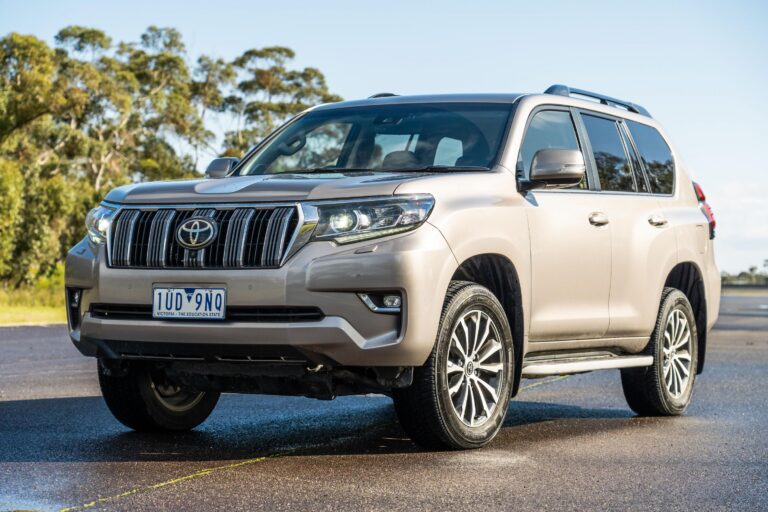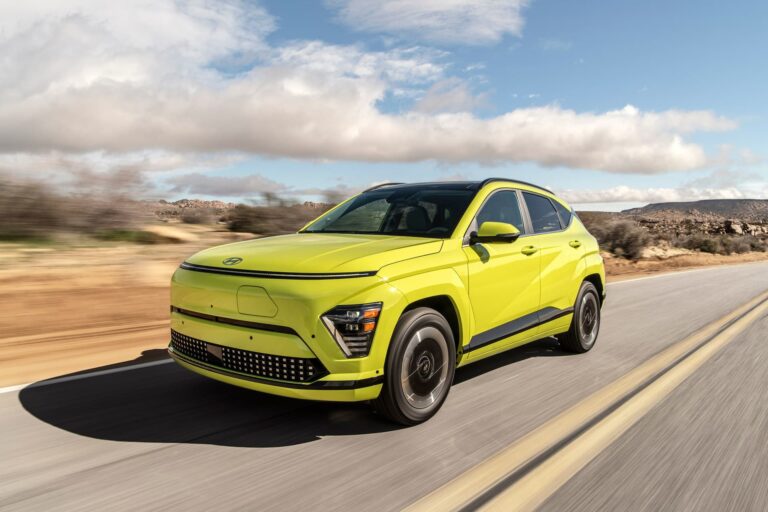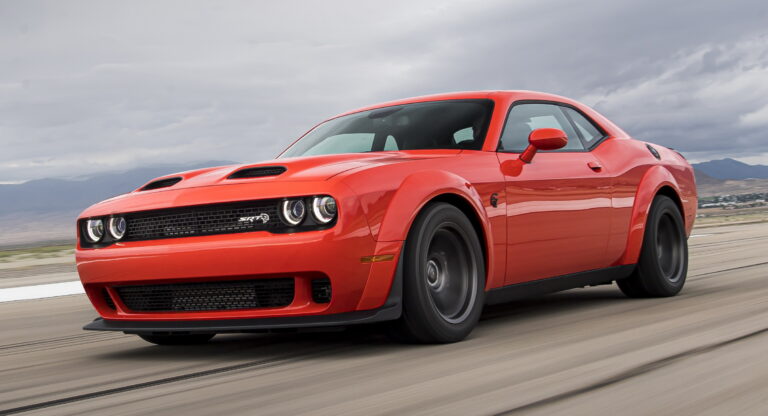Standard Box Truck: The Unsung Hero of Modern Logistics
Standard Box Truck: The Unsung Hero of Modern Logistics cars.truckstrend.com
In the bustling world of commerce, where goods need to move swiftly and securely from point A to point B, one vehicle consistently stands out for its versatility and reliability: the Standard Box Truck. Often seen navigating city streets, delivering packages, or facilitating residential moves, this workhorse of the road is an indispensable asset for countless businesses and individuals. More than just a truck, it represents a flexible, efficient, and often cost-effective solution for a myriad of transportation needs, serving as the backbone for local logistics, last-mile delivery, and countless other applications that keep our economy moving.
What is a Standard Box Truck? A Comprehensive Overview
Standard Box Truck: The Unsung Hero of Modern Logistics
A standard box truck, also commonly known as a cube truck, straight truck, or cube van, is a commercial vehicle characterized by its distinct, cube-shaped cargo area that is rigidly attached to the truck’s chassis, separate from the driver’s cab. Unlike a semi-trailer, which pulls a detachable trailer, a box truck is a single, self-contained unit, making it more maneuverable and accessible for urban deliveries and tighter spaces.
These vehicles are built on a truck chassis, similar to a heavy-duty pickup truck or a medium-duty truck, and come equipped with an enclosed cargo box designed to protect goods from weather, theft, and damage. Key components often include roll-up or swing-out rear doors, interior lighting, and various tie-down points or E-track systems to secure cargo. Box trucks are typically classified by their Gross Vehicle Weight Rating (GVWR), which determines their capacity and often the type of driver’s license required. They range in size from small 10-foot models, perfect for light deliveries, to larger 26-foot versions capable of hauling significant loads, often without requiring a Commercial Driver’s License (CDL) if their GVWR is below 26,001 pounds.
The Undeniable Benefits of Standard Box Trucks
The widespread adoption of standard box trucks across various industries is a testament to their numerous advantages:
- Versatility: Box trucks are incredibly adaptable. They are used for everything from furniture delivery, appliance transport, and package delivery to catering, mobile workshops, and even specialized refrigerated transport for perishable goods. Their enclosed nature makes them suitable for a diverse range of cargo.
- Cargo Protection & Security: The enclosed cargo area offers superior protection against adverse weather conditions, dust, and debris, ensuring goods arrive in pristine condition. Furthermore, the lockable rear doors provide enhanced security against theft, a crucial factor for valuable or sensitive shipments.
- Maneuverability: Compared to larger semi-trailer trucks, box trucks are significantly easier to navigate, especially in congested urban environments, residential areas, and loading docks with limited space. This makes them ideal for last-mile delivery and local distribution routes.
- Cost-Effectiveness: For businesses with consistent, medium-volume transport needs, owning or leasing a box truck can be more cost-effective than relying on third-party logistics providers or maintaining a fleet of larger, more expensive vehicles. Smaller box trucks often don’t require CDL drivers, reducing labor costs.
- Branding Opportunities: The large, flat sides of a box truck provide an excellent mobile billboard for businesses. Custom wraps and decals can transform the vehicle into a powerful marketing tool, increasing brand visibility wherever it goes.
- Ease of Use: Many standard box trucks, particularly those under the 26,001 lbs GVWR threshold, can be driven with a standard driver’s license, broadening the pool of potential drivers and simplifying logistics for small businesses and individuals.
Key Considerations When Choosing Your Box Truck

Selecting the right standard box truck is crucial for maximizing efficiency and minimizing operational costs. Here are essential factors to consider:
- Size and Capacity (Length & GVWR):
- Length: Common sizes include 10ft, 12ft, 14ft, 16ft, 20ft, 24ft, and 26ft. Match the length to the typical volume of goods you need to transport.
- GVWR: This determines the maximum operating weight of the truck and its contents. Ensure the GVWR is sufficient for your heaviest loads. Trucks under 26,001 lbs GVWR generally do not require a CDL.

- Engine Type (Gas vs. Diesel):
- Gasoline: Often cheaper upfront, quieter, and better for stop-and-go urban driving. Maintenance can be simpler.
- Diesel: More fuel-efficient for long hauls, higher torque for heavy loads, and generally more durable. However, they have higher upfront costs and more complex maintenance.
- Features and Accessories:
- Liftgate: Essential for loading and unloading heavy or bulky items without a loading dock.
- Roll-up vs. Swing Doors: Roll-up doors are faster and save space behind the truck; swing doors offer wider access and better sealing.
- E-track System: A versatile rail system for securing cargo with straps and shoring bars.
- Translucent Roof: Allows natural light into the cargo area, improving visibility.
- Ramps: Useful for lighter items or if a liftgate isn’t needed.
- Refrigeration Unit: Necessary for transporting temperature-sensitive goods.
- New vs. Used vs. Rental/Lease:
- New: Full warranty, latest features, but highest upfront cost and rapid depreciation.
- Used: Lower cost, but requires thorough inspection and potential for higher maintenance.
- Rental/Lease: Ideal for short-term needs, fluctuating demand, or trying out a model before committing to purchase. Offers flexibility and avoids large capital expenditure.
Operating and Maintaining Your Box Truck for Peak Performance
Proper operation and diligent maintenance are key to the longevity and efficiency of your box truck.
- Driving Practices:
- Awareness: Box trucks have large blind spots and require more braking distance. Always check mirrors frequently and anticipate traffic.
- Overhead Clearance: Be mindful of the truck’s height, especially under bridges, in parking garages, and near tree branches.
- Wide Turns: Account for the longer wheelbase and swing of the rear of the truck when turning.
- Securing Cargo: Always properly secure all items inside the cargo box using straps, blankets, and E-track systems to prevent shifting during transit, which can cause damage to goods or the truck, and even lead to accidents.
- Loading and Unloading Best Practices:
- Weight Distribution: Distribute weight evenly across the cargo floor, with heavier items placed closer to the front of the box. Uneven loading can affect handling and tire wear.
- Liftgate Safety: If equipped, always use the liftgate according to manufacturer instructions. Ensure the area around the liftgate is clear, and never exceed its weight capacity.
- Door Operation: Ensure rear doors are fully open and secured before loading/unloading, and properly latched before driving.
- Routine Maintenance:
- Preventative is Key: Follow the manufacturer’s recommended maintenance schedule for oil changes, tire rotations, fluid checks (coolant, brake fluid, transmission fluid), and filter replacements.
- Tire Care: Maintain correct tire pressure, check for wear and damage, and replace worn tires promptly.
- Brakes: Regularly inspect brake pads, rotors, and fluid levels. Box trucks carry heavy loads, so brake health is paramount.
- Liftgate Inspection: Check hydraulic lines, electrical connections, and moving parts for wear or leaks. Lubricate as needed.
- Lighting: Ensure all headlights, taillights, brake lights, and turn signals are functional.
- Licensing and Regulations: Understand the specific driver’s license requirements based on your truck’s GVWR. For commercial operations, be aware of DOT regulations, hours of service, and vehicle inspection requirements.
Common Challenges and Practical Solutions
Operating a box truck isn’t without its challenges, but most can be mitigated with proactive planning:
- Fuel Costs:
- Solution: Optimize delivery routes using GPS and route planning software. Encourage fuel-efficient driving habits (smooth acceleration, steady speeds). Regular maintenance ensures the engine runs efficiently.
- Maintenance Expenses:
- Solution: Budget for preventative maintenance. Establish relationships with reliable mechanics specializing in commercial vehicles. Consider extended warranties for new trucks.
- Driver Training and Availability:
- Solution: Invest in comprehensive driver training covering safe operation, defensive driving, and cargo handling. Ensure drivers are aware of and comply with all licensing and regulatory requirements.
- Parking and Maneuvering in Tight Spaces:
- Solution: Plan routes to identify suitable parking and unloading zones in advance. Utilize spotters when backing up in congested areas. Practice maneuvering in a safe, open space.
- Cargo Security:
- Solution: Use high-quality locks on rear doors. Install GPS tracking devices for real-time monitoring. Implement strict cargo loading and securing protocols. Consider cargo insurance for valuable shipments.
Standard Box Truck Estimated Price Guide
Please note that these prices are estimates and can vary significantly based on brand, model year, engine type, mileage (for used), specific features (e.g., liftgate type, refrigeration), dealer location, and market conditions. This table serves as a general guide.
| Size (Length) | GVWR Range (Approx.) | New Price (Estimated Range) | Used Price (Estimated Range) | Common Features | Typical Usage |
|---|---|---|---|---|---|
| 10-12 ft | 10,000-14,000 lbs | $35,000 – $55,000 | $15,000 – $30,000 | Roll-up door, Basic shelving (optional) | Small deliveries, Courier services, Light moving |
| 14-16 ft | 14,000-18,000 lbs | $45,000 – $70,000 | $20,000 – $40,000 | Roll-up or Swing doors, E-track, Translucent roof | Appliance delivery, Furniture delivery, Mid-size moving |
| 20-22 ft | 18,000-26,000 lbs | $60,000 – $90,000 | $30,000 – $55,000 | Liftgate (often standard), E-track, Interior lighting | Commercial deliveries, Larger moving jobs, Event logistics |
| 24-26 ft | 26,000 lbs (or more) | $70,000 – $120,000+ | $40,000 – $75,000+ | Heavy-duty Liftgate, Air conditioning, Cruise control, Diesel engine options | Heavy freight, Large-scale commercial moving, Long-haul local routes |
Disclaimer: Prices are highly variable. Always obtain multiple quotes from dealers or rental companies based on your specific needs and location.
Frequently Asked Questions (FAQ) about Standard Box Trucks
Q1: What is the main difference between a box truck and a moving truck?
A1: Essentially, they are the same type of vehicle. "Box truck" is the general industry term for the vehicle type, while "moving truck" often refers to a box truck specifically rented or used for household or office relocation purposes. Many rental companies like U-Haul, Penske, and Budget offer box trucks configured as moving trucks.
Q2: Do I need a CDL (Commercial Driver’s License) to drive a standard box truck?
A2: It depends on the truck’s Gross Vehicle Weight Rating (GVWR). In the U.S., a CDL is generally required for vehicles with a GVWR of 26,001 pounds or more. Most box trucks rented for personal use (e.g., 10-foot to 26-foot trucks) typically have a GVWR under this threshold, meaning you can drive them with a standard Class D driver’s license. Always check the specific truck’s GVWR and your local regulations.
Q3: What does GVWR mean and why is it important?
A3: GVWR stands for Gross Vehicle Weight Rating. It’s the maximum operating weight of a vehicle as specified by the manufacturer, including the vehicle’s chassis, engine, body, fuel, accessories, driver, passengers, and cargo. It’s crucial because it determines licensing requirements, vehicle classification, and safety limits. Exceeding the GVWR is illegal and unsafe.
Q4: How much weight can a standard box truck carry?
A4: The cargo capacity (payload) depends on the truck’s size and GVWR. To calculate the approximate payload, subtract the truck’s curb weight (its weight empty) from its GVWR. For example, a 26-foot box truck with a GVWR of 26,000 lbs might have a payload capacity of around 10,000-15,000 lbs, while a 16-foot truck might carry 4,000-6,000 lbs. Always check the specific truck’s payload capacity.
Q5: Are box trucks difficult to drive?
A5: While larger than a typical car, most standard box trucks (especially those under CDL requirements) are designed to be relatively easy to drive. They typically have automatic transmissions, power steering, and good visibility. However, their size requires drivers to be more aware of wide turns, overhead clearances, and increased braking distances. Practice and caution are advised.
Q6: What is a liftgate, and do all box trucks have them?
A6: A liftgate (or power lift) is a platform mounted at the rear of the truck that can be raised and lowered, allowing easy loading and unloading of heavy or bulky items from ground level into the truck bed without a loading dock. Not all box trucks come with liftgates; they are often an optional feature or standard on larger models.
Conclusion: The Backbone of Modern Deliveries
The standard box truck, in all its iterations, is more than just a means of transport; it’s a vital component of local and regional economies. Its unique combination of enclosed cargo space, maneuverability, and varied capacity makes it an ideal solution for businesses ranging from small startups to large corporations, as well as for individuals undertaking significant moves. By understanding the different types, key considerations for selection, best practices for operation and maintenance, and potential challenges, users can leverage the full potential of these indispensable vehicles. The box truck continues to be an unsung hero, reliably delivering goods and services, bridging distances, and facilitating the smooth flow of commerce in our ever-moving world.







